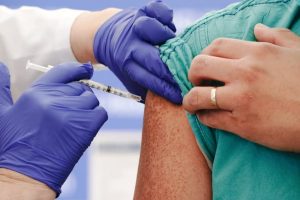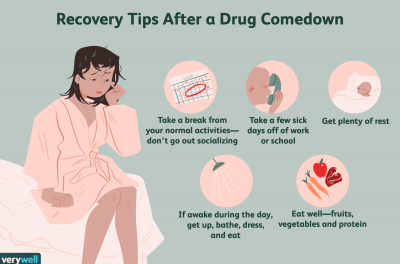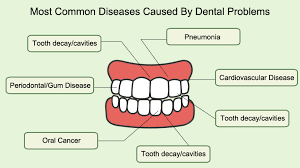The vaccines made by Pfizer-BioNTech and Moderna use mRNA to fight COVID-19. When these vaccines were rolled out, it was the first time mRNA was used on humans in vaccine technology. While the concept is new to the public, the research has been around since the early 1990s.
Read the full article with Pritish Kumar Halder and explore more knowledge about mRNA Vaccines.
What are mRNA Vaccines?
mRNA is a type of molecule that has the ability to deliver a specific set of instructions to your cells to make pieces of protein used by certain viruses. This could induce an immune response to fight off a viral attack.
Harnessing this technology, scientists had been experimenting with mRNA’s potential use against deadly diseases like influenza, Ebola, and SARS.
mRNA Vaccines vs. Traditional Vaccines
 Traditional vaccines use weakened or inactivated germs to trigger an immune response in our body.
Traditional vaccines use weakened or inactivated germs to trigger an immune response in our body.
mRNA vaccines use genetically engineered molecules that teach your cells to make a harmless piece of protein that belongs to a specific virus.
This triggers your immune system to make antibodies that are designed to attack and destroy the viral protein.
Why Does mRNA Vaccine Use Protein?

mRNA technology
This mRNA technology uses viral protein because it plays an important role in a successful infection. The protein enables a virus to enter your body, attach itself to a cell, replicate, and spread. mRNA vaccines teach our cells to build antibodies against the protein particle and prevent infection and keep you from getting seriously ill.
How mRNA Vaccines Work
To make an mRNA vaccine, scientists must first identify a protein on the outside of the virus that the body’s immune response will respond to (the “target” protein). The protein they choose must be sufficiently different from proteins on the outside of the body’s own cells, so the immune system only attacks the virus.
 They then identify the DNA that has the information for making the target protein. Scientists use the DNA to produce the mRNA for the target protein. Once enough mRNA has been made, the DNA is broken down to ensure that only the mRNA is packaged in the vaccine. The speed and efficiency of this process can make large amounts of mRNA in a short period of time.
They then identify the DNA that has the information for making the target protein. Scientists use the DNA to produce the mRNA for the target protein. Once enough mRNA has been made, the DNA is broken down to ensure that only the mRNA is packaged in the vaccine. The speed and efficiency of this process can make large amounts of mRNA in a short period of time.
mRNA is a fragile molecule, so it is “wrapped” in a fat-based coating to protect it. Other ingredients are added to the vaccine to keep it stable and make sure the vaccine behaves as it should in the body. After packaging, the vaccine is stored and shipped at very low temperatures to help keep the mRNA intact and the vaccine safe and effective.
mRNA Vaccines and COVID-19
COVID-19 mRNA vaccines are given in the upper arm muscle. The mRNA enters your muscle cells and instructs them to make “spike proteins.” It’s the same type of protein found on the surface of the SARS-CoV-2 coronavirus, which attaches to cells to cause a COVID-19 infection. After your body builds antibodies against the spike protein, it gives you immunity against the real SARS-CoV-2 virus infection.
mRNA COVID-19 Vaccine Guideline
Everyone 5 and older can get an mRNA COVID-19 vaccine. The Pfizer vaccine is approved for ages 5 and up, but so far the Moderna vaccine is only approved for ages 18 and up. To build a successful immune response against the SARS-CoV-2 virus, you need two doses of the same vaccine given 21 days apart if the Pfizer vaccine is used or 28 days apart if using Moderna.
What About Booster Shots?
Booster shot recommendations depend on which mRNA vaccine you received for your primary series.
If you’re 12 or older and got the Pfizer vaccine, you’re eligible for a booster from any manufacturer 5 months after your last jab. Teens 12-17 years old can only get a Pfizer booster.
If you’re 18 or older and got the Moderna vaccine, you’re eligible for a booster from any manufacturer 5 months after your last jab.
Quick Facts: mRNA COVID-19 Vaccine Technology
mRNA vaccines don’t contain live viruses and can’t infect you.
mRNA breaks down right after it delivers instructions to your cells. It never has the chance to enter the cell nucleus, which contains your DNA. The vaccine can’t change or influence your DNA.
The cells break down mRNA material a few days after the vaccination.
The spike protein your cells use to build antibodies may linger in your body for a few weeks.
mRNA Vaccine Technology: What’s Next?
The mRNA vaccine technology and its success against COVID-19 have opened doors to explore its uses against a variety of diseases. This is because the makeup and delivery mechanism now provides scientists a basic template to target any virus. They can simply insert the code for a particular viral protein and stimulate your immune system against it. Given that the technology already exists, the turnaround for vaccines could be faster.
mRNA Technology: Future Applications
Some mRNA vaccines against diseases like HIV, Zika, and rabies are already in the human trial phase.
Other potential vaccine uses include:
- Malaria
- Cystic fibrosis
- Tuberculosis
- Hepatitis B
- Treatment for certain types of cancer









